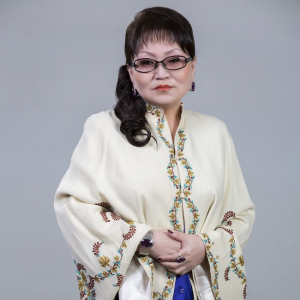Энэ 7 хоногт
Festival celebrates Eurasian culture, music
Graduate assistant Michael Hancock laid the final piece of handmade felt over the roof of his willow-boned yurt. The assembly of this nomadic dwelling, which included erecting lattice-woven sticks and dyed reeds, took more than an hour. And this was just the miniature.

Sophomore Delgerbat Uvsh plays tunes from Mongolia on a Morin Huur Horse fiddle as part of the Silk Road Bayram on Saturday at the Willkie Auditorium. The festival highlighted music and fashion from 14 countries along what is known as the Silk Road – a trade route as old as 200 B.C
Graduate assistant Michael Hancock laid the final piece of handmade felt over the roof of his willow-boned yurt. The assembly of this nomadic dwelling, which included erecting lattice-woven sticks and dyed reeds, took more than an hour. And this was just the miniature.
“Yurts typically stand about 10 feet in the center,” Hancock said, making the knee-high scale model look diminutive. “If everyone knows what they’re doing, it’ll take one or two days to assemble a real one.”
The Kyrgyz building, favored by nomads of the country, was one of the many artifacts on display at the 18th-annual Silk Road Bayram in the Willkie Auditorium.
The bayram, or festival, celebrated the different countries along the ancient trade route, which wound its way from China to modern-day Italy. The event featured both a cultural gallery and musical performances from those familiar with the region.
Volunteers draped in gilded Afghan costumes served as cultural guides, fielding questions from visitors. Artifacts and reading material kept adults entertained; children darted through the crowd with outstretched arms, attempting not to smear the henna designs drying on their palms.
Silk Road Institute Director Shahyar Daneshgar says the organization has gained more experience catering to its audiences during its 18-year run.
“We’re getting better at handling a crowd,” he said.
Every year of growth has allowed more of Bloomington’s summer residents to experience the magic of the ancient route and immerse themselves in the culture of the expansive region.
“This is a chance to meet and learn about people from the place, rather than hear about it from some reporter who has only been there for two weeks,” Ph.D student Behnaz Zamani said, referencing media coverage of conflicts in the area. “Usually the representation is unrealistic.”
Zamani’s husband, Afghan language Professor Rahman Arman, also urged people to look past the stereotypes that he said are perpetrated on the nightly news.
“I hope that people become familiar with the experience and learn that (the region) is more than war,” he said.
For those more interested in music than politics, the main event offered a three-hour performance by a bevy of musicians.
Sophomore Delgerbat Uvsh used the festival as an opportunity to play his morin khuur, an instrument he learned in his native Mongolia. His music shared the air with tones and rhythms from Tibet, China, Azerbaijan, Russia, Turkey, Iraq, Iran, Afghanistan and Italy.
Multi-instrumentalist and event performer Soheil Zolfonoon entertained the audience with his instrument of choice, the tar, a six-stringed brother of the sitar and guitar (the suffix “tar” means string in Afghan languages).
Originally from Iran, Zolfonoon said he moved to the States to pursue a music career among “internationally-minded” people.
“Bloomington has developed a palate for world music,” Daneshgar said, referring to fall’s Lotus World Music Festival as well as community radio stations that cater to global tastes.
Because not all Americans are privy to international stylings, Zolfonoon encouraged new or reluctant listeners to start slowly with simpler rhythms and ragas to become familiar with the styles.
This spirit of interconnectivity was one echoed often by the festival volunteers. Hancock, who began studying central Eurasia after a stint in the Peace Corps, expressed his desire to share the region with people living in Bloomington.
Despite its historical significance, Hancock found that his friends and family knew little about the area.
As the outreach coordinator of the Inner Asian and Uralic National Resource Center at IU, Hancock now facilitates events like the bayram to raise awareness.
Zolfonoon, whose dream is to one day travel the Silk Road himself, likened the experience to that of a honeybee.
“From each country, you pick up and learn something new,” he said. “Like a honeybee, we gather pollen from many wonderful flowers to make a delicious
honey.”






